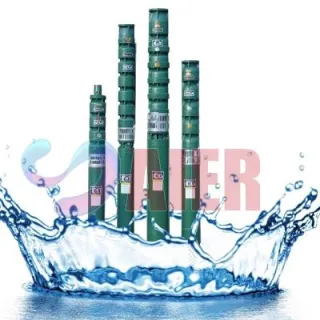снеж . 06, 2024 08:17 Back to list
Centrifugal Slurry Pump Impeller Design and Performance Analysis for Enhanced Efficiency
Understanding Centrifugal Slurry Pump Impellers
Centrifugal slurry pumps are essential machinery in various industries, particularly in mining, construction, and wastewater treatment, where they are used to transport mixtures of solids and liquids, commonly referred to as slurries. A critical component of these pumps is the impeller, which plays a vital role in determining the pump's efficiency, wear resistance, and overall performance.
The Role of the Impeller
The impeller is the rotating part of the pump that imparts kinetic energy to the slurry. As the impeller spins, it pushes the slurry away from the pump's center, converting rotational energy into fluid motion. This action creates a low-pressure area at the impeller eye, allowing the surrounding slurry to flow into the pump. The design of the impeller significantly influences both the flow characteristics and pressure that the pump can achieve.
Design Considerations
The design of a centrifugal slurry pump impeller involves various factors to optimize performance. One critical aspect is the impeller's shape, which can vary from open to closed designs. Open impellers, with their straightforward structure, are suitable for handling slurries with a high concentration of large solids. They are easier to clean and maintain; however, they often have lower overall efficiency. On the other hand, closed impellers, which consist of two shrouded blades, provide higher efficiency and better hydraulic performance, making them ideal for applications requiring a smoother flow of slurry.
Material selection is another vital consideration. Impellers must withstand abrasive wear caused by solid particles in the slurry. Common materials used include high-chromium alloys, rubber, and polyurethane, chosen based on the specific application and the nature of the slurry being pumped. For example, rubber impellers are effective in handling corrosive slurries but may wear out faster when dealing with highly abrasive materials.
centrifugal slurry pump impeller

Performance Indicators
An efficient impeller should promote a smooth and uninterrupted flow of slurry with minimal wear over time. Performance can be measured in several ways, including pumping capacity, pressure, and energy consumption. A well-designed impeller allows for the efficient transfer of kinetic energy to the fluid while minimizing energy losses due to turbulence or friction.
Maintenance and Troubleshooting
Regular maintenance of the impeller is crucial for the longevity and efficiency of a centrifugal slurry pump. Inspection for wear, erosion, or damage should be conducted periodically. This can involve checking for signs of corrosion or loss of material, which may indicate that the impeller needs repair or replacement. Moreover, misaligned or unbalanced impellers can cause vibrations and noise, potentially leading to further mechanical issues if not addressed promptly.
Conclusion
The impeller is a pivotal component in the operation of centrifugal slurry pumps. Its design, material composition, and maintenance directly affect the pump's performance and efficiency. By understanding the importance of the impeller and ensuring its optimal condition, industries can achieve more reliable and efficient pumping of slurries. As technology advances, innovations in impeller design and materials will likely continue to enhance the capabilities of centrifugal slurry pumps, paving the way for more efficient processes in various industrial applications.
-
Wholesale Slurry Pump Closed Impeller Supplier High Efficiency China Slurry Pump Closed Impeller
NewsJul.06,2025
-
High Quality Warman Slurry Pump Drawings Supplier & Factory Reliable Customization
NewsJul.06,2025
-
China SP Slurry Pump Supplier – Vertical Sump Pump Rubber Lined Manufacturer & Factory
NewsJul.05,2025
-
High Quality Submersible Slurry Pump with Agitator Manufacturer & Factory Reliable Submersible Pump Solutions
NewsJul.05,2025
-
Cheap Dredge Pump for Sale – China Cheap Submersible Pump for Wastewater Supplier
NewsJul.05,2025
-
Wholesale Casting Dredge Pump Part - High Quality China Manufacturers & Suppliers
NewsJul.04,2025
